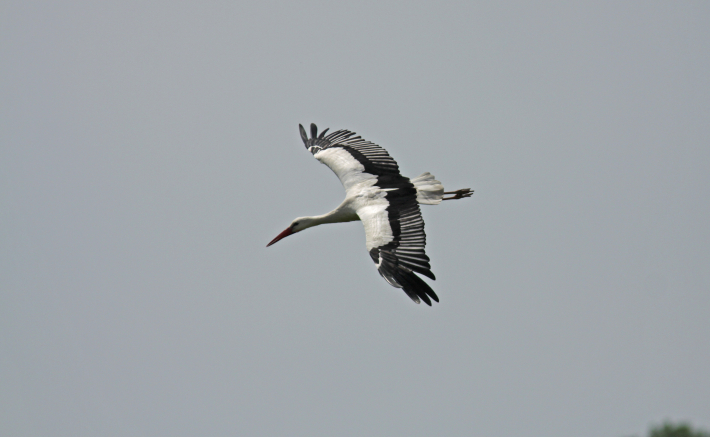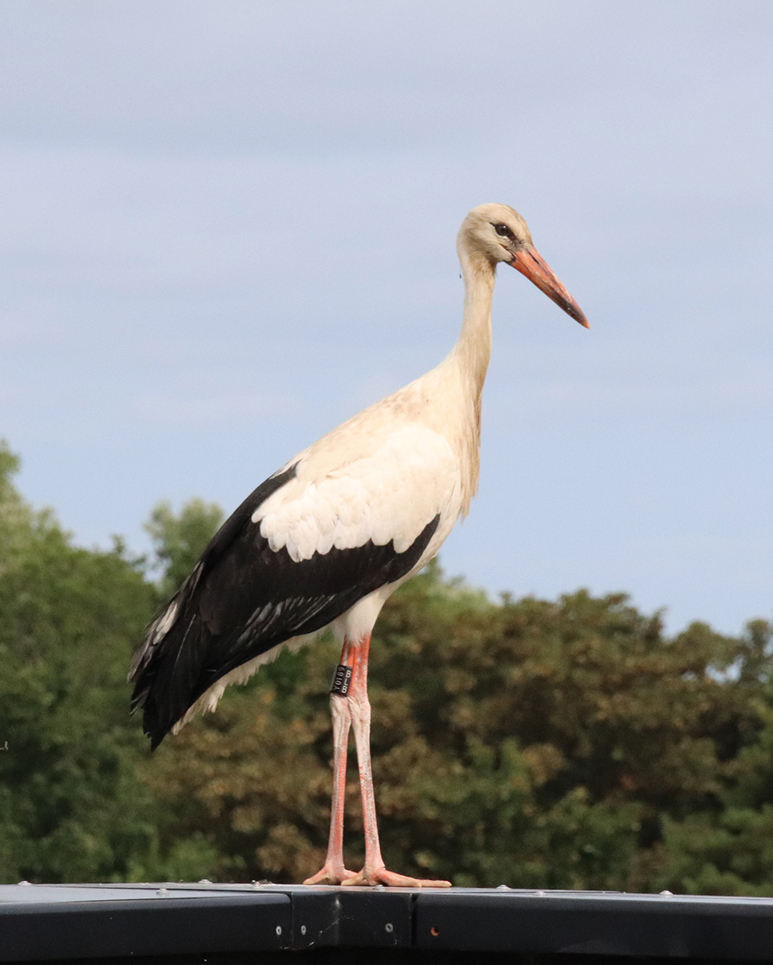
When can you see storks in the Zwin Nature Park?

January
The few that winter in or around the Zwin visit their nest increasingly frequently, even spending the night there on some days. As the month progresses, they also spend more time on their old nest during the daytime. This is their way of claiming their nest and indicating that they intend to use it again for the upcoming breeding season. The hibernators are older storks who know the area like the back of their hand and where to forage during winter. Generally speaking, these birds have been breeding here for many years. The nest they occupy is the one they used in previous years.
Birds that prefer to winter in the south are still at their wintering grounds in January.
February
The storks that wintered in or around the Zwin can now be found on their nests daily as the month progresses. To save energy, they spend a lot of time standing in their nests for long periods of time, dozing gently. Breeding pairs of which both birds winter here regularly engage in bill-clattering. Whether you will see storks on their nest depends largely on the weather conditions. The birds are often present on sunny and calm days, but on cold or stormy days, they prefer to seek out some refuge.
As February progresses, the first storks that wintered in the south arrive in the Zwin. Any birds that arrive this early presumably did not fly too far south, spending time in France. It’s only a short journey back to their breeding grounds. The newcomers immediately claim their old nest, also spending a lot of time on it. Early arrivals are generally breeding birds that have been breeding here for several years. They know each other and the local wintering storks that are already on-site. As a result, there are few, if any, conflicts between the resident storks in February.
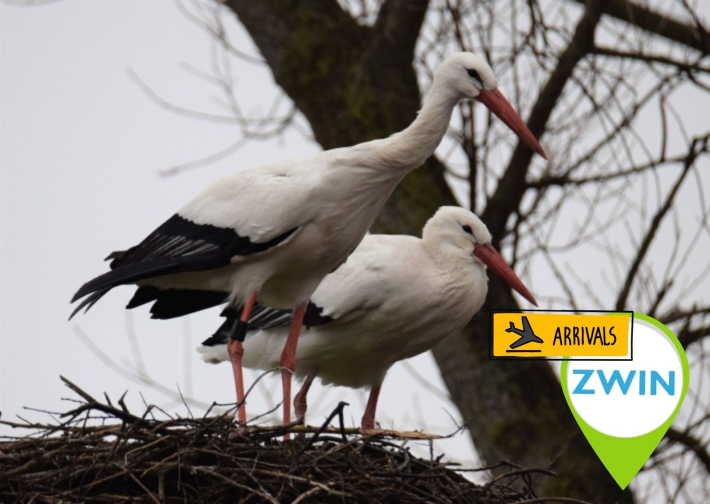
March
In March, the pace picks up for storks with breeding plans as they prepare for the new breeding season. They continue to add to their nest. Storks that return to a nest used for breeding in previous years add a new layer of branches. In so doing, they strengthen the nest after winter, but nest building also strengthens the bond between the pair. Nest building involves more than just tossing some branches in a pile. Storks often seem to think long and hard about where to place a specific branch or twig, and sometimes one partner will even move a branch that their partner had already put in place. Bill-clattering is a more frequent occurrence, and the pairs start to mate regularly.
New storks continue to arrive. Presumably, they wintered further south. As these arrivals include newcomers who have not previously nested here, you can see how this would result in considerable bickering! Storks put up quite a fight when it comes to claiming the nest they want, sometimes even to the point of drawing blood!
By the end of March, you’ll find the first eggs in some nests. The most experienced pairs, usually birds that have been breeding in the park for years (and usually together), are usually the first out of the gate. New arrivals or newly-formed breeding pairs usually only start to lay their eggs in April.
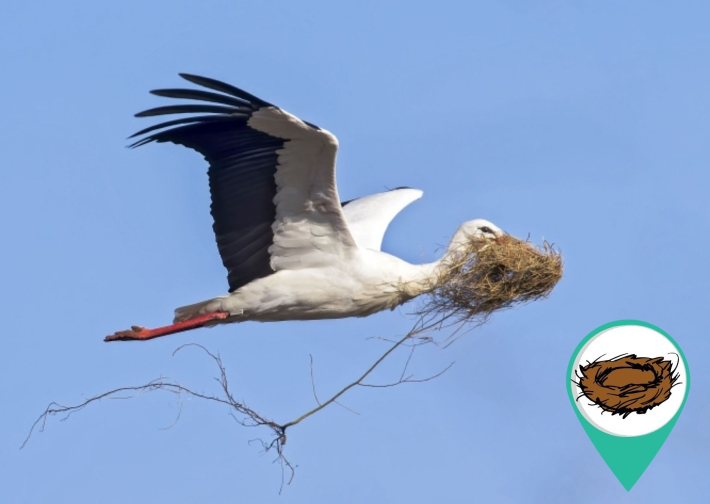
April
Any storks that had not yet laid eggs by the end of March usually do so in April. These are almost always newcomers or newly-formed pairs. They lay their eggs later than more experienced birds of breeding pairs that have been breeding in the park for years.
Eggs are not laid in one go but with intervals of about two days. But storks sit on their nest as soon as they have laid their first egg. This also means their young will not all hatch at the same time.
After the flurry and conflicts of March, April tends to be a little quieter. This is the month that most storks patiently sit on their nests, incubating their eggs. An egg takes about 33 days to hatch, so the birds have no choice but to be patient. At the end of the month, the first eggs hatch in the nests of pairs that started earlier.
Occasionally, new storks arrive in April. These are young birds presumably, that do not have their own breeding grounds yet. If these birds are ringed, we can trace their origin. We sometimes find that some were born in the Zwin and the surrounding area. But sometimes, they also include storks from further afield. A small proportion of those latecomers try to claim a nesting site in the park, but they are not always successful. Occasionally, they even attempt to breed, but this almost always ends in failure. If not, they simply sit on their nest, with or without a mate. In a sense, this is an investment and a start for next year’s breeding season. Storks that arrive in April are just passing through. Young 2 to 3-year-old storks often visit several breeding sites before they finally settle on a place to start breeding.
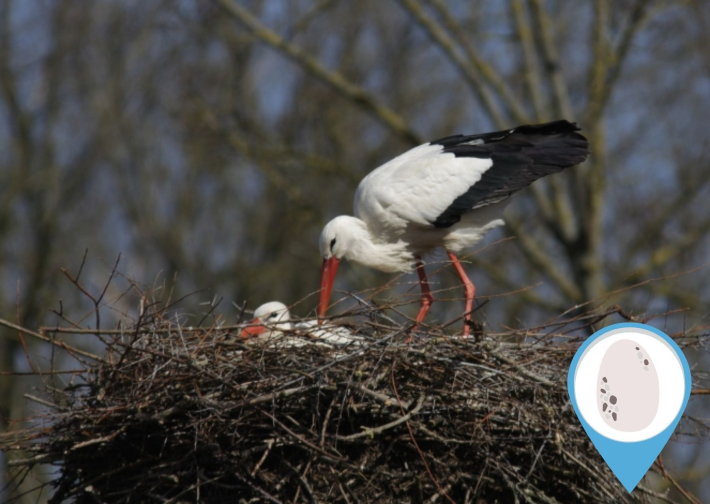
May
Most stork chicks are born in May. In the beginning, the chicks are very small and helpless. Their first downy plumage is thin, and they cannot yet control their temperature on their own, meaning they require constant protection and warmth from one of their parents.
The parents divide the tasks nicely between themselves. While one protects and keeps the chicks warm, the other goes foraging for food. When the forager swoops down in the nest, the other parent usually leaves immediately to go out foraging. Storks swallow any food they find, bringing it to the nest. They then regurgitate this pre-digested mush for their chicks. While this may look rather gross, the little ones love it!
Because the eggs were laid a few days apart, the young do not hatch at the same time. This explains the significant difference in size, especially between the oldest and youngest chicks. The little ones struggle. The law of the jungle applies in the nest, with the oldest and largest young claiming most of the food. Except when food is plentiful, the chances of survival of very young chicks are generally very slim. Many do not survive the first weeks of their life.
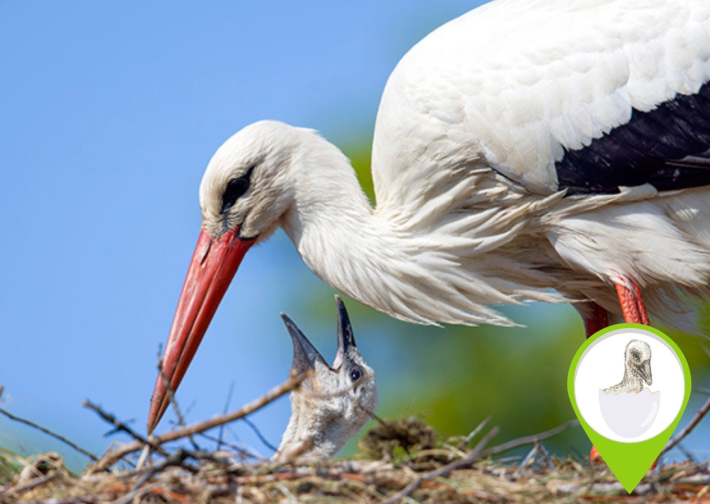
June
June is prime growing time for the young storks in the nest. A small chick takes about two months to become a fully-grown stork. As the young grow, they get a new, second downy plumage. Because it is slightly thicker than the first one, the young can control their body temperature better. The young are now increasingly left alone by their parents. This is also largely due to the fact that the growing young need more food. Both parents have to work hard to forage for enough food.
By June, the young are big enough to be ringed. Thanks to the unique number on their ring, they can be identified for the rest of their lives. This teaches us a lot about storks and helps us to protect them even better.
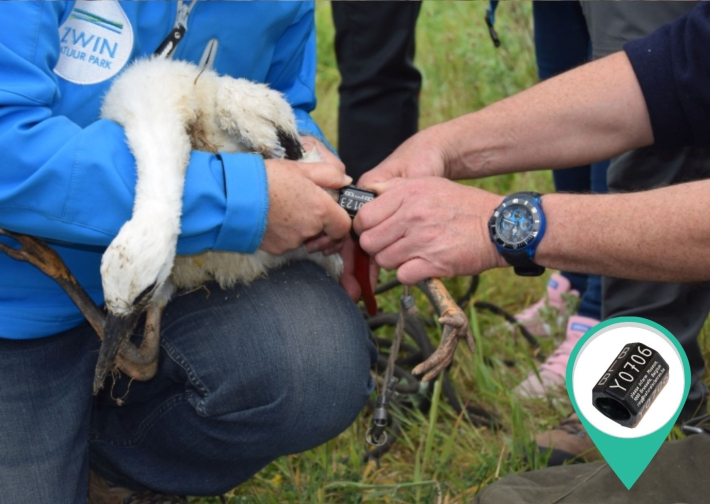
July
In the first weeks of July, most young storks fly the nest. Although they already resemble their parents closely at this stage, you can tell from their beaks that these are still young birds. Their beak is slightly shorter than the beak of adult storks and the tip is still slightly blackish in colour. At first, the young storks are clumsy fliers, but their flying skills soon improve.
Once the young have flown the nest, the parents cut back on their food supply, nudging the young storks to start foraging for themselves. Fortunately, they can join the older birds to learn how to do this.
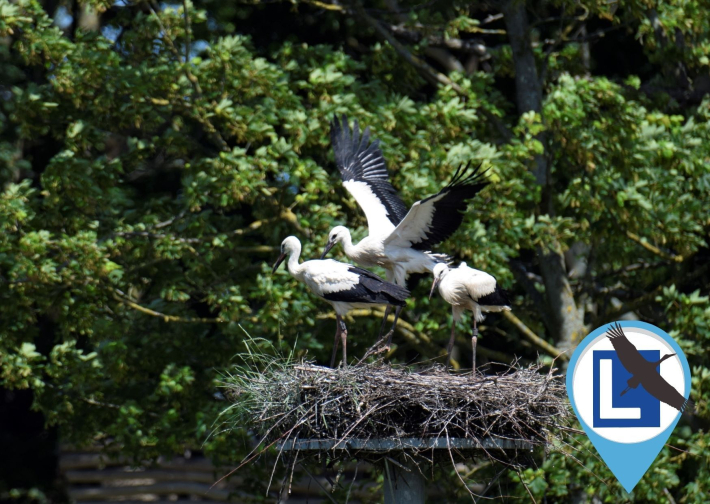
August
August is the month in which most storks depart. After flying the nest in July, young birds have less than a month to learn to fly properly and forage for food independently. As their flying skills improve, they regularly take short flying trips in the surrounding area. That way, they get to know the area around their breeding grounds better from the air. This knowledge will be useful when they fly back north next year, as this will help them find their way back to the park.
They fly south on a beautiful August day. The storks invariably leave on a nice, sunny day, as there are lots of air thermals, and they need the uplift to soar and glide to high altitudes easily, without too much effort.
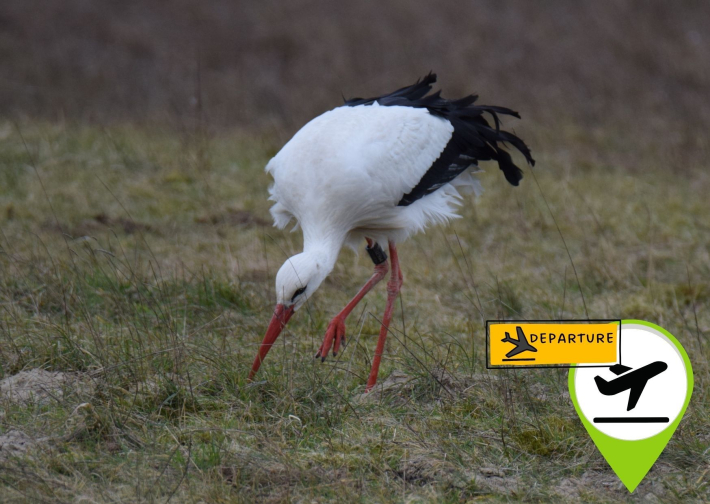
September
September is a real travel month for most storks. A small group prefers to winter here instead of migrating, but during this month most birds are on their way south. Older experienced birds know where to go and leave with that destination in mind. Young birds have to discover all this for themselves.
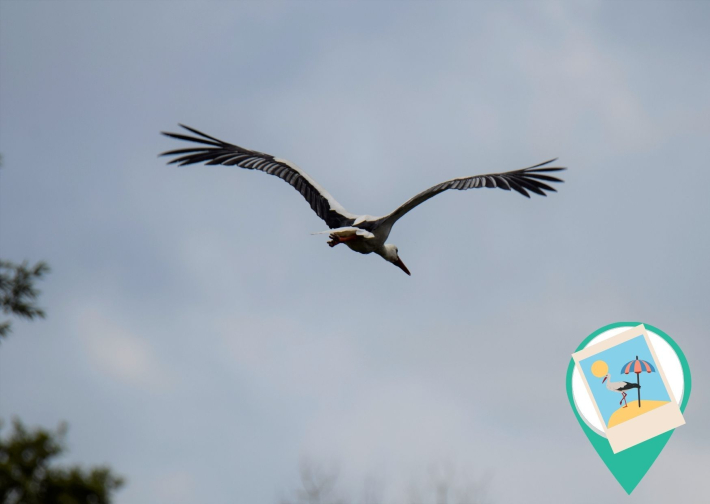
October
By now, older storks that have migrated south in the past have arrived in their wintering grounds. Young birds that are on their first big trip south lack this experience. As a result, many of them are still on the move in October, roaming between different places where they could winter. Choosing a place to winter can be difficult when you’re not that experienced. Storks need to find a place where food is plentiful and where they are safe. Young storks are not yet fully aware of all the risks and dangers, so they are more likely not to survive their migration.
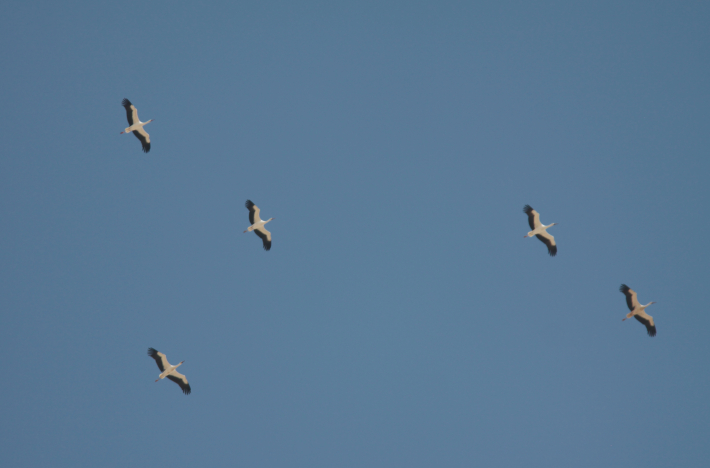
November
November is a quiet month for storks. By now, all storks have found a place to spend the winter. Most storks that breed in the Zwin spend winter in Spain or northern Morocco. The most attractive overwintering sites are... landfills or garbage dumps! While these are dirty, smelly places, they are also a great place where storks can forage for edible waste or for the many rats and mice that live there.

December
December is also a wintering month for storks. Usually storks stay in the wintering grounds they chose in October-November, if the food is plentiful. Some storks spend their winter in the Zwin and the surrounding area. These include a number of breeding birds of the Zwin Nature Park. These older storks have been breeding here for years. During December, these birds visit their nests more often in preparation for the next breeding season. These are usually short visits. Sometimes, they also spend the night here. When a breeding pair lands on the nest together, the bond between the pair is strengthened with a brief bill-clattering session.
